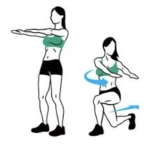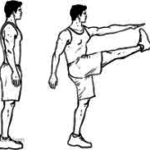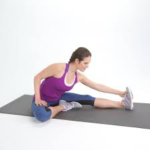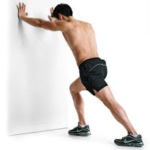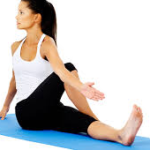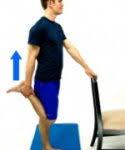As the weather begins to improve, people begin participating in more outdoor recreational activities. However, this change in activity level can come with an increased risk of injury. This article will briefly describe ways to decrease risk of injury through various stretching techniques.
After activity, it is important to stretch as the muscles are recovering from activity in order to decrease soreness and increase muscular extensibility. Static stretching is typically performed after a workout and is defined as a stretch that is held for a period of ~30 seconds. It is recommended that each stretch be performed 3-4 times to maximize benefits of stretching and decrease future risk of injury. Good examples of static stretching that is useful post-workout include a hamstring stretch, quad stretch, calf stretch, or trunk twist. Please see pictures below
Written by: Holly Hibbard, D.P.T. from Harbor Physical Therapy


